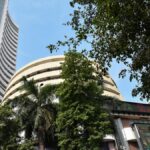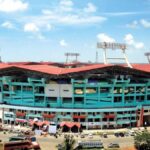The Bruhat Bengaluru Mahanagara Palike (BBMP) has officially been dissolved, and the city will now be administered by five newly formed corporations. But several key functions will remain with specialised agencies earlier carved out of the BBMP. B.S. Prahallad, Technical Director of Bengaluru Smart Infrastructure Limited (B-SMILE), outlines the projects being taken up by the Special Purpose Vehicle (SPV). Excerpts from an interview
How did the idea of B-SMILE come about?
In 1995, Bengaluru’s population was 47 lakh. By 2015, it rose to about 86 lakh, and after 2016, the growth was massive, touching 1.43 crore within the next decade. While this surge boosted economic growth, it also had a negative effect, as infrastructure was not upgraded to match the demand. To bridge these gaps, we needed comprehensive planning and focused execution. Initially, Bengaluru Smart City Limited was considered for implementing these plans. However, since the central government had its own conditions tied to that entity, the State decided to establish a Special Purpose Vehicle (SPV), similar to SITs, to take up mega projects and flagship programmes.
What kind of projects will B-SMILE take up?
The SPV will focus on three major areas. First, decongesting the city through mega infrastructure projects such as elevated corridors and tunnel roads. Second, junction improvements and white-topping of arterial roads. Third, upgrading Bengaluru’s lighting system.
How will the SPV finance its projects?
The government has made an immediate allocation of ₹100 crore, while the (erstwhile) BBMP has allocated ₹431 crore. These funds are currently being used to prepare Detailed Project Reports (DPRs) for upcoming projects. In the long term, the SPV will adopt Hybrid Annuity Models (HAMs) and Build-Own-Operate-Transfer (BOOT) models for funding mega infrastructure projects. For white-topping arterial roads, the government will bear the full cost. For BOOT and HAM projects, where the government must fund a portion, loans will be secured from the Housing and Urban Development Corporation (HUDCO). Repayment will come from revenues generated through Premium Floor Area Ratio (FAR) and advertisements, ensuring no direct burden on the public.
What projects are currently planned?
The Twin Tunnel Road project is in the tendering stage. Elevated corridors covering 109.5 km will be taken up, particularly to decongest the city’s most notorious junctions and corridors. A 450-km white-topping project across the city is planned to improve commuting quality. The Sanchara Yukta project, which involves building roads in rajakaluve buffer zones to remove illegal encroachments, will cover around 300 km. Additionally, a city-wide lighting initiative will convert all streetlights to LEDs, reducing electricity consumption by 50–60%. Historical buildings will also be illuminated, similar to Vidhana Soudha.
At what stage is the elevated corridors project in?
For all 16 elevated corridors, the DPRs are in the final stage. Only cost estimation remains pending. We are waiting for the Public Works Department (PWD) to release the Common Schedule of Rates (SRs) for 2025–26. Once released, DPRs will be finalised. Currently, we estimate that the 109.50 km elevated corridors will cost around ₹15,000 crore, excluding land acquisition. The exact figure will depend on the new SRs.
There’s a lot of backlash for the tunnel project… Is it an absolute necessity?
Since 1995, road users have grown by 300%, while infrastructure has remained stagnant. A comprehensive traffic study showed that congestion is worst between Hebbal in the north and Hosur Road in the south. While building another elevated corridor here was considered, a tunnel road proved more viable. Bengaluru has 35 lakh households, of which 23.6 lakh own cars. BMTC carries about 44 lakh people daily, while the Metro serves around 10 lakh. Where do the rest go? Expanding the fleet can help, but it takes time. Should people continue to suffer? This growing gap not only worsens congestion but also strains existing infrastructure. That is why the tunnel road is critical. If we admire mega infrastructure projects in countries like China, why shouldn’t we dream of achieving the same here? We are capable, and with people’s support, we can make it happen.
What stage is the project at?
Tenders have been floated, and eleven companies, including two foreign firms (in partnership with Indian companies), attended the pre-bid meeting. They expressed satisfaction with the TDR and requested more time to prepare bids. We have extended the deadline to September 22. Foreign bidders cannot participate independently; they must partner with a local company.
There are concerns that the project lacks environmental clearance and that B-SMILE has done limited tests and analysis
The Karnataka State Environment Impact Assessment Authority has clarified that this project does not require environmental clearance under the EIA notification. Regarding tests, we need geotechnical and geophysical surveys, as well as seismic studies. Preliminary tests have been conducted, and results show that Bengaluru’s terrain is suitable for a tunnel road. Moreover, for every 100 meters of the tunnel, the concessionaire will conduct additional, in-depth tests.
Has the land acquisition budget increased?
Initially, we estimated ₹600 crore. We now need an additional ₹200 crore since we plan to build shafts on new land, avoiding disruption to existing stretches. Except for one site near St. John’s, all acquisitions will be from government property, ensuring no burden on the public.
Published – September 09, 2025 01:00 am IST






















